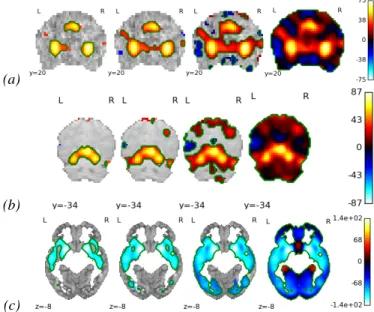Speeding-up model-selection in GraphNet via early-stopping and univariate feature-screening
Texte intégral
Figure

![Fig. 2. Predicting age from gray-matter concentration maps from the OASIS dataset [10]](https://thumb-eu.123doks.com/thumbv2/123doknet/12874297.369533/4.918.85.849.77.496/fig-predicting-gray-matter-concentration-maps-oasis-dataset.webp)
![Fig. 3. Visual recognition dataset [9]. (a): Weights maps for the Face vs House contrast, for different the early-stopping and univariate feature-screening thresholds](https://thumb-eu.123doks.com/thumbv2/123doknet/12874297.369533/5.918.77.847.79.491/recognition-weights-contrast-different-stopping-univariate-screening-thresholds.webp)
Documents relatifs
Our contribution in this paper is twofold: (i) we learn a joint Pair-Hidden Markov model from a training set composed of (situation,sentence)-pairs; (ii) we study the impact of
Furthermore, Zeuner and co-workers used a coupled three- nanorod structure and phase-dependent ultrafast excitation to achieve coherent control of the nonlinear response of
Among all concepts in the formal lattice, we select for data compression only those that are directly connected to the exit point in the lattice hierarchy that we refer to as
With all four of the parallel random generators used, the algorithm terminates after a signif- icantly reduced number of trials compared to the standard implementation of
Gaps in research still exist with respect to measuring the qualitative effects of official labour market integration programmes, validation measures and other courses
We show how to speed up the discrete log computations on curves having automorphisms of large order, thus generalizing the attacks on anomalous binary elliptic curves.. This
We measure the running time and the accuracy of the results by varying 3 parameters: (i) the sampling strategy (CFSampling or ESampling), (ii) the number of samples (2, 3, 4 or 5);
Spectral Stochastic Finite Element Method (SSFEM), makes it possible to convey some random aspects of input data to the output data.. However, the system size dramatically